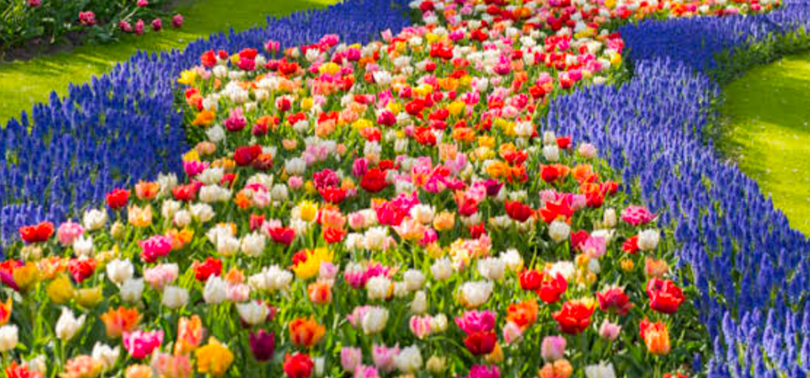Maintaining garden beauty all year roundtakes special and strategic planning.
Picture stepping into a four-season garden with lush, green grass and thriving blooming flowers from the warmth of spring to the summer heat, crisp autumn and cool winter.
Crafting a year-round garden design keeps your outdoor space looking visually stunning no matter the weather.
Keep reading if you’re interested in seasonal landscape planning and planting.
Understand Your Garden’s Climate Before You Start

Optimal seasonal planting is all about climate-smart gardening.
Understanding your garden’s microclimate isn’t just a formality, but goes to the foundation of choosing the right plants that’ll flourish each season.
Little things like the USDA zone, garden sunlight analysis, local wildlife presence, and other environmental factors help in hardiness zone planning.
USDA Zone
Know the hardiness standard of your garden’s zone to ensure you pick the best perennials to thrive all year round.
Sunlight Patterns
Consider how the sun moves across your property during the day and mark the shady vs. exposed spots.
Wildlife Presence
Know whether your area is prone to deer, rabbits, and any other animals that could be pests to your plants.
Let’s explore how to achieve this captivating all-season garden.
Select Plants That Thrive in Every Season
Next, it’s time to choose the right seasonal garden plants for your year-round visual experience. Here, you’ll mix evergreens, perennials, and seasonal bloomers to maintain garden interest year-round.
Incorporating perennial combinations with evergreen landscaping into your garden plan ensures your lawn stays vibrant in the chilly winter.
Some four-season flowers you can use include:
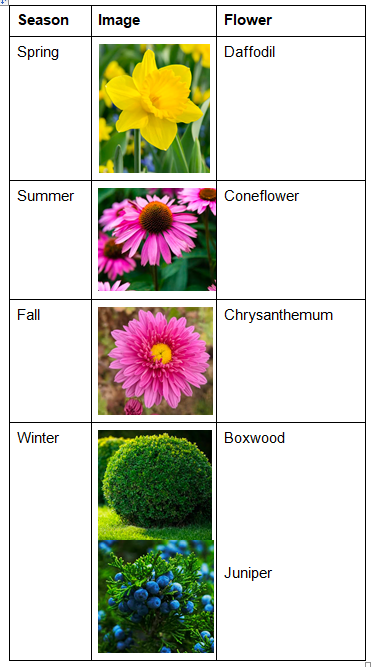
Maximize Space with Strategic Garden Layouts
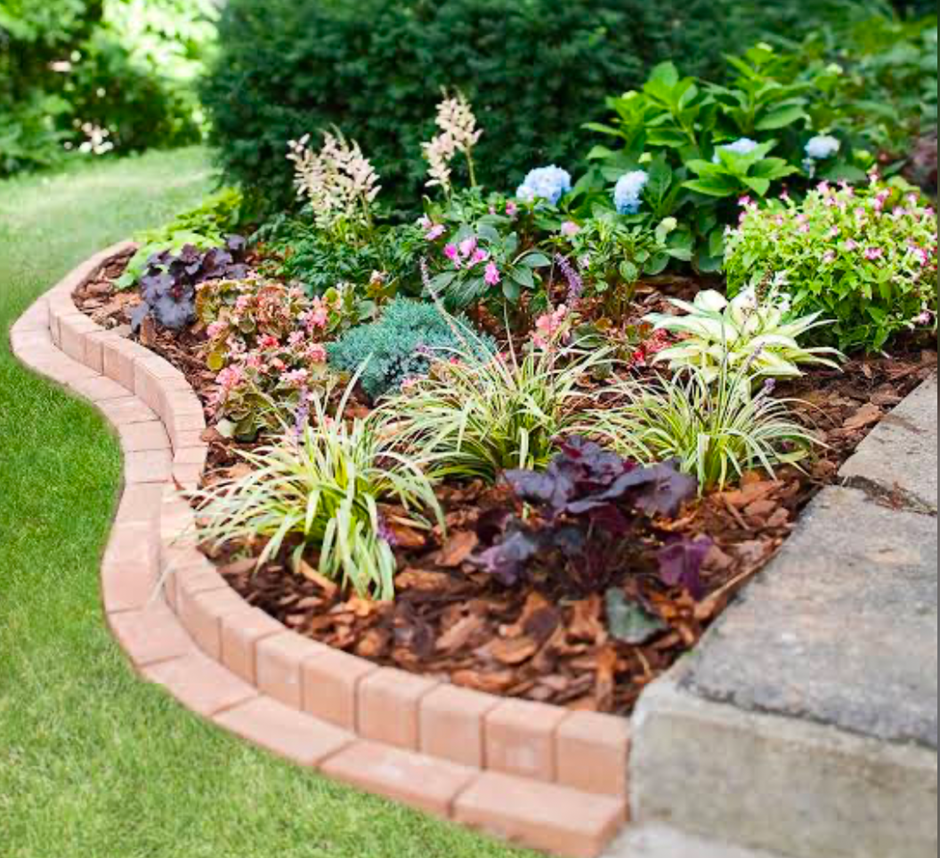
Creating a visual flow in gardens is all about telling a story and how you want people to experience your layout. Use strategic landscape layering to maximize space while telling your story.
Here’s how you can create a visually stunning space-saving garden design:
Zoning
Map out inviting zones like cozy nooks for private gatherings or personal time.
Curved Paths
Use curved paths to soften sharp edges and make the space look warmer and more charming.
Layering
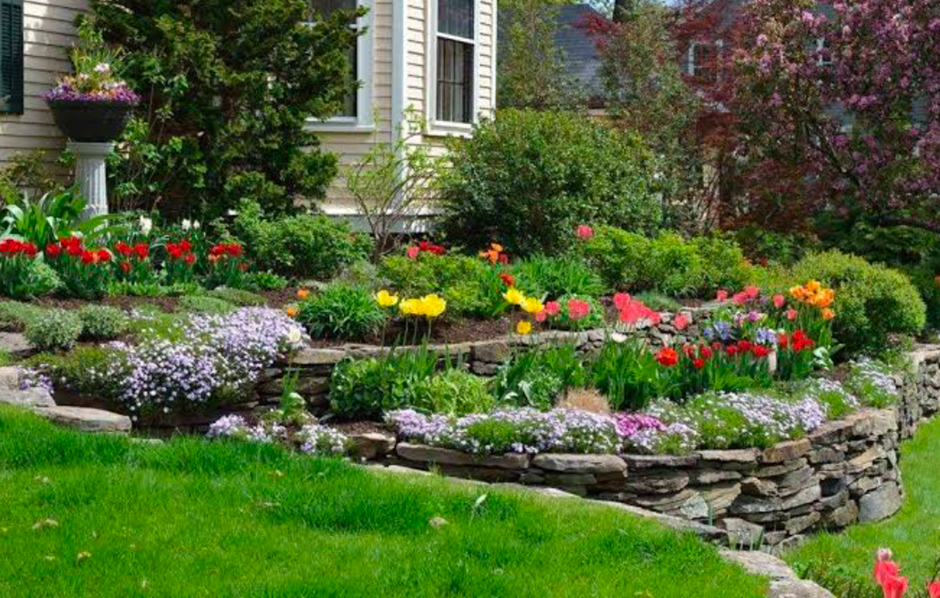
Alternate your plant height and create layers with elevation changes. Use steps and terracing to draw attention to different floral areas, which brings a sense of flow and dimension to your garden space.
Grouping
You can group your plants by any metric of your choice, but numbering is the best. Some gardeners choose even numebrs while others use odd number groupings for a natural layered effect.
Explore as many garden layout ideas as you want until you settle on one that feels like you.
Add Structure with Smart Hardscaping Features
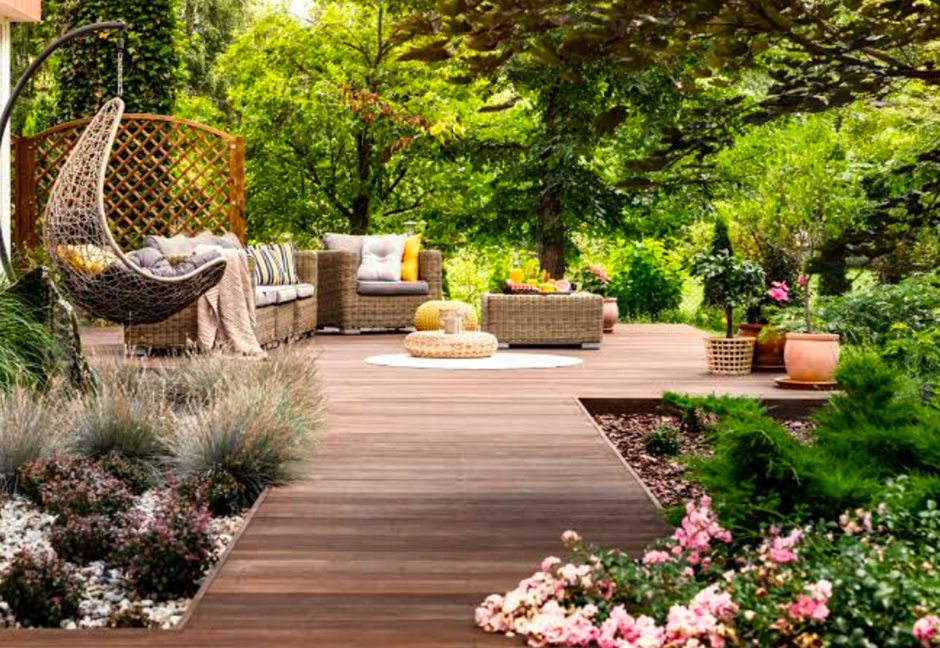
If flower planting is the flesh, garden hardscaping is the bone of your layout. It provides the structure upon which you build your plants and set up a functioning outdoor gathering space.
Think of these elements as support systems that help you enjoy your all-season garden without damaging the plants.
Patios and Pathways

When you need to meander through your garden or spend some quality time relaxing and gathering with friends, your pathways and patios come in handy.
You can intertwine your patio and path design by adding a sitting area by the pathway, or separate them depending on your garden size.
Decorative Stones and Wood

Add texture and contrast with decorative garden stones like gargoyles and fountains, sleek concrete or warm wood to highlight your seasonal plants. These non-living components give your garden a clean and polished look.
Maintain with Seasonal Garden Care Routines

Seasonal garden maintenance is an ongoing process with particular practices for each season.
Spring Care

Start your maintenance with a pruning schedule in the spring, just before you plant your seedlings and flowers. It’s the ideal time because that’s when most plants begin to grow.
Summer Care

Because of the summer heat, it’s best to water and weed your plants during this season. It keeps the soil moist and discourages unwanted plants from taking root.
Fall Care

Clean up excess debris and prepare your plants for the upcoming winter. Use frost protection tips like covering the plants with a sheet, constant watering and mulching.
Winter Care

Keeping mulch for winter insulates your roots from frost and snow.
Don’t forget to test your soil’s health during Spring and fertilize it adequately to replenish the nutrients that are lacking. A little love and attention go a long way in ensuring you stay healthy all year long.
Use Color and Texture for All-Season Interest

Colors and textures are powerful storytelling tools because they evoke emotions and create responses. Consider an overall seasonal garden color palette to guide you through your plant and flower combinations.

Warm and bright colors like orange, yellow, and red energize, while tones like blue, green, and purple bring tranquility. So, consider these emotions when making your flower color combinations. Use yellow sunflowers to match the summer vibe and scarlet leaves to set fall ablaze.

Also, use plant texture contrast to set the mood in different seasons. Hosta’s smooth leaves highlight the feathery fronds of ornamental grasses during the festive winter.
Create a varied year-round garden texture to keep the conversation going every time guests visit.
Enhance Tranquility with Water Features

Besides using cool colors for tranquility, garden water features also transform your space into a calming oasis for humans and local wildlife.
Whether it’s a pond, fountain, or bird bath, water element landscaping brings a peaceful ambiance to your outdoor space.

Having a wildlife-friendly garden benefits the ecosystem because ot encourages birds and beneficial insects to migrate, which energizes your garden.
Choose your water feature style based on your garden’s theme. It can be rustic, modern, vintage, or a nice mix of multiple eras. If you like this means of soothing your mind with a focal point, here’s how to explore backyard fountain ideas:
| Era/Theme | Water Feature |
| Rustic | Natural Pond |
| Contemporary | Sleek Fountain |
| Vintage | Ornamental Fountain |
Remember to integrate these water features into your existing garden layout for a seamless visual flow.
Optimize Vertical Space with Creative Gardening

Explore vertical garden ideas like trellises, living walls, and climbing plants to maximize your compact outdoor space. Vertical gardening can also be a functional planting style, like climbing plants for privacy.
Place vertical planters and hanging baskets on your walls, fences, and balconies, then plant jasmine and clematis.
These wall-mounted planters boost dimensions and greenery in small outdoor areas by drawing your eyes upwards and leaving leg room on the ground.
This space-saving gardening tip is a game-changer if you have a compact outdoor area, especially in the suburbs!
Welcome Nature with a Wildlife-Friendly Design

Before saying goodbye, let’s talk a little more about crafting a sustainable garden design for your environment.
Native Plants
With native plant gardening, you’ll encourage local wildlife to migrate to your garden for food and shelter from the familiar environment.
Flowering Plants
Use pollinator-friendly plants with flowers to attract bees, hummingbirds, butterflies, and other beneficial pollinators for biodiversity.
Wildlife-friendly Features
Make a bird-friendly landscape by adding small features like a mud patch for bathing, a bug hotel, bird feeders, and nesting boxes.
Bring your garden alive with an active ecosystem thriving in biodiversity.
Conclusion: Build a Garden That Thrives in Every Season
Designing a year-round gardening layout is a rewarding adventure that combines creativity, planning, and patience for a mesmerizing burst of colors.
Imagine building a lasting garden design that shines no matter the season and remains a source of joy and relaxation throughout the year.
You can only achieve this seasonal landscape success when you understand your garden’s climate, choose the right plants to evoke emotions, and thrive each month. Highlight your flowers with carefully selected landscaping.
All of these outdoor sanctuary planning tips are within your reach. You only have to scroll to the beginning of this guide and take notes till you reach the end.

